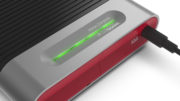Believe it or not, the most common form of storage in the world didn’t exist at all in 1970. At this point it’s hard to find anything that doesn’t have non-volatile memory.
What is NVRAM?
Non-volatile random access memory is used to store things semi-permanently. It’s not for things that are permanent like the computer’s basic instructions. It’s more for things that hang around for a while but not forever. For example, a list of all the parts inside your computer. That list could change but it’s not likely to change on a daily basis. Non-volatile memory doesn’t disappear when you unplug or turn off your device. Instead it stays until it’s erased.
The history of non-volatile memory
There was a time when electrical devices were simple. Their actions were dictated by switches and gears. Even electronic devices followed predictable patterns that never ever changed. The world of electronics was upended by the invention of general-purpose processors like the Intel 4004 (a distant cousin of which probably powers your PC today.) The general purpose process could interpret any instructions you threw at it, but there was a hitch: you had to be able to store those instructions.
Originally that kind of information was stored on paper or on magnetic tape. These methods were semi-permanent but slow. Hard drives came along but even by the computer standards of the day they were still too slow. Computers needed a form of storage that was super-fast and super-stable. That’s why you need non-volatile random access memory, commonly called NVRAM.
What about ROM?
ROM refers to information permanently stored on computer chips. It stands for “read-only memory.” The difference beween NVRAM and ROM, the other sort of solid-state storage, is that ROM is forever. Memory information gets etched onto the chip during manufacturing and no changes take place after that. NVRAM is, at some level, changeable. Early non-volatile memory technologies adopted an “erasable” methodology. If you needed to make one change, you wiped the whole thing and rewrote it completely. By the 1980s, computer companies developed “flash” memory. Flash memory stores information permanently but as needed, the device can erase or change the contents literally bit by bit.
Is all memory in a computer non-volatile?
Regular random-access memory (RAM) makes up most of the temporary memory storage inside a device. NVRAM also differs from regular random access memory. RAM memory works extremely quickly compared to other forms of storage but it requires constant power. NVRAM stores things permanently whether or not there is power.
You’ll find NVRAM in everything from remote controls to supercomputers. NVRAM stores information that must survive a loss of power, such as the codes in your universal remote or the codes required to launch a nuclear attack. NVRAM chips routinely survive explosions and drops from planes. That’s how stable it is.
Computer designers use many different technologies to produce NVRAM, but they all have the same result. They have one thing in common: a circuit that changes somehow after the application of electricity and keeps that change when there is no electricity. Some forms of NVRAM are super-stable by design. This NVRAM works in military and space purposes. Other NVRAM is super-cheap for consumer use. Stack together enough NVRAM and put an industry-standard connector on it, and you have a “solid state drive,” a device that acts like a traditional hard drive but is much, much faster and quieter.
Devices use NVRAM for storage on everything from washing machines to thermostats to smart watches. It’s literally everywhere, and the world we live in wouldn’t work without it.
Shop for the best computer accessories
If you’re looking for new computing accessories, check out the great selection at Solid Signal.





